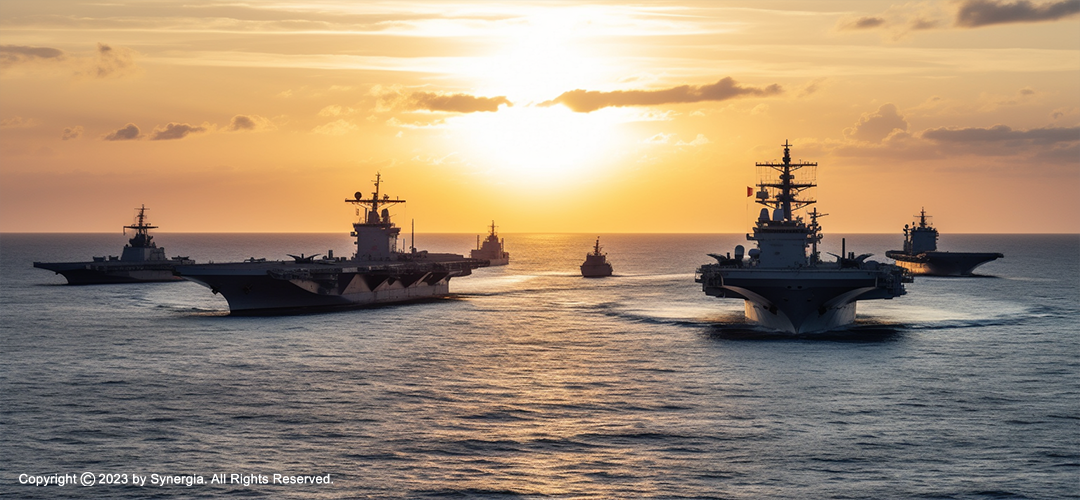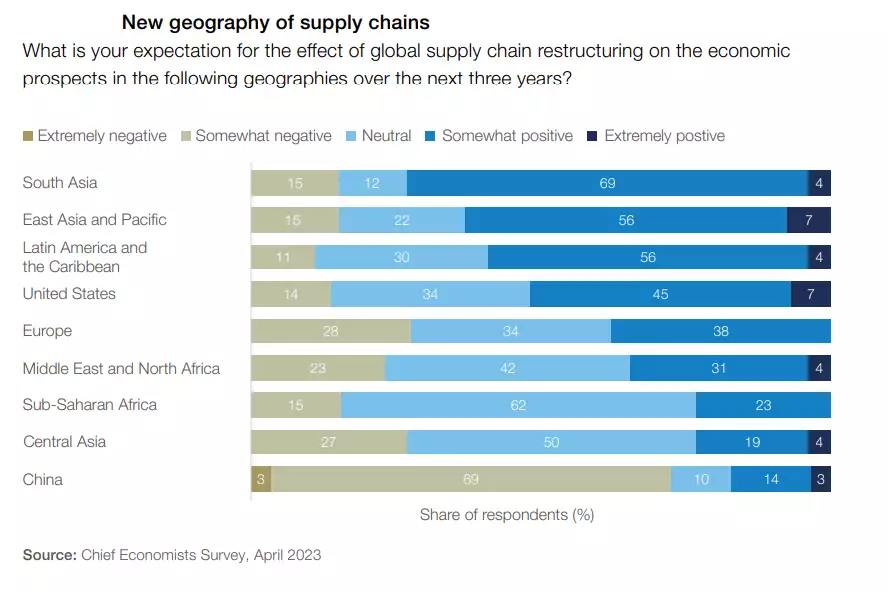Supply Chain Resiliency in the Indo-Pacific
June 3, 2023 | Expert Insights

The main buzzword for the present international economic system is interconnectivity. All production and manufacturing lines are connected. If there is any manufacturing disruption in any one country, then this deeply impacts production lines in downside countries. No country is an economic island anymore. In such a situation, supply chain resiliency becomes all the more crucial.
This was cruelly exposed by the pandemic-imposed lockdowns and the disruptions caused by the Ukraine war.
Background
The Indo-Pacific region has gained centre stage not only because of the geopolitical struggle between China and the U.S., but also the economic heft of the region that has risen over the last few decades. With many of the leading economies situated in the region, the Indo-Pacific is today the hub of global trade.
A significant development was the 2022 Indo-Pacific Economic Framework for Prosperity (IPEF) launched by the President of the United States, Joe Biden. Fourteen countries are members of this initiative, including India. There are four pillars to this economic framework-fair equitable trading practices and supply chain resilience, infrastructure, green energy and decarbonisation, and streamlining tax laws and anti-corruption measures. Each of these pillars is important, and together they form a comprehensive approach to dealing with common economic challenges which cut across borders. But each of these issues is also highly controversial as each country has a fixed set of ideas about them. So, it is very difficult to reach a consensus on these issues.
Supply chain resiliency has increasingly become the most relevant and pressing. Recent events that buffeted global economic systems bear witness to this. First, there was the global spread of Covid-19 that laid low economies large and small. The pandemic was a bolt from the blue and caught the global markets totally unprepared, and the connectivity of the global markets ensured that no part of the world was left untouched by its malevolent economic impact.
The second serious shock was Russia’s invasion of Ukraine. This was, again, a totally unexpected event. Russia is a major energy supplier to the world, while Ukraine is a major supplier of food grains. The invasion took place just as the international economic system was trying to recover from the effects of the pandemic. After its invasion of Ukraine, Russia has been completely cut off from the world economy. This has consequently put a huge pressure on energy markets everywhere. Industries that depend on the smooth supply of energy have been disrupted. Other sectors which depend on these industries have also borne the brunt. War-ravaged Ukraine cannot supply many least-developed countries with grains. This has overturned the interconnected food supply chain spread throughout the planet.
These two crises came as a powerful blow to the global supply chain system. Businesses that have production and manufacturing facilities spread throughout the world have been especially affected. The Indo-Pacific region, as the hub of international trade, has seen significant losses.
Another pressing issue is climate change. Here again, the countries of the Indo-Pacific region are very vulnerable.
Under these circumstances, the IPEF throws a lifeline to the Indo-Pacific economies by reimagining the supply chains that emanate from the region or feed off the manufacturing bases of several Indo-Pacific countries.

Analysis
The IPEF is being viewed as an effort by the U.S. to sideline China by diminishing its stranglehold on global supply chains. It sounds logical that as Washington's geopolitical competition with Beijing increases, it cannot at the same time have its manufacturing and production facilities based in China. The shifting of supply chains is a laborious and time-consuming process and cannot be achieved overnight. The U.S. cannot go about it alone and needs like-minded partners that share its concerns vis a vis China with many of them overawed by China's sheer size and industrial might. But with the U.S. to lead, there are bound to be many countries to join this coalition to counter Chinese economic domination.
The supply chain agreement is the most substantial achievement of the IPEF framework. Previous attempts to establish trading regulations in the Indo-Pacific have largely failed. This has been basically due to the non-cooperation of the United States. There is always a fear in America that if it signs any economic agreement, then it will give up its economic sovereignty, especially in trade. President Biden’s administration is the first one which has had the courage to go ahead with the IPEF. Apparently, the supply chain pressure is increasingly being felt by U.S. businesses, both large and small and can no longer be allowed to fester on.
The rules of the game have also changed dramatically- the U.S. can no longer dictate economic policy to the rest of the world, and for many critical raw materials and technologies, the United States is dependent on some key countries. These countries might have much smaller economies, but they are irreplaceable nodes in the supply chains of the American economy that provide jobs to U.S. workers. The supply chain of critical technologies is closely linked to the maintenance of U.S. national security. Without them, the U.S. will fall behind China in national defence. So, now even the procurement of U.S. national defence has an international component.
The supply chain framework of the IPEF will integrate the leading economies of the Indo-Pacific like India, Japan and South Korea. It will reduce bottlenecks that are causing huge delays. With greater supply chain resiliency, the investment climate in these countries will dramatically improve as multinational corporations would be incentivised to set up their base in these countries.
India has some concerns about the trade pillar because it does not clarify the potential environmental and labour impacts on the Indian economy. India is still a developing economy. It cannot bind itself to any commitment which will tie it down. New Delhi recognised the significance of the supply chain issue. So, it has decided to work together with other countries on this. But on trade, it needs more convincing before it can make a balanced decision.
The IPEF framework and the finalisation of the Agreement on supply chain resiliency show what happens when the U.S. engages constructively with the rest of the world. This is a welcome departure from the ‘America First’ isolationist economic policy of the Trump administration and should hopefully endure even if Trump is voted back to power.
The worldwide supply chain consists of different sectors of the economy. Each of these sectors have their own separate requirements. Coordination is necessary to meet these needs. A council has been established for this purpose. Emergency responses will be developed by this council, and it will also look into labour issues. This Agreement is not sector specific. According to the U.S. Secretary of Commerce Gina Raimondo, "No sectors are singled out in this agreement because the U.S. will need to work with partners to determine what is important”. This indicates that there is a certain level of flexibility to this Agreement. The nitty-gritty are being left for each country to decide in its own context.
Assessment
- This Agreement was a long time coming. The ratification of this deal shows that the declaration of the premature death of globalisation has been exaggerated.
- The economic potential of this Agreement is immense. This Agreement has been signed keeping in mind not only the Russia-Ukraine war but also the growing tensions across the Taiwan Straits. Therefore, it is much better placed to handle future shocks.
- Supply chains are more like networks than simple straight lines. So, this Agreement has to be implemented at multiple levels. With built-in flexibility to cater to the specific needs of individual countries, the Agreement has better chances of survival.








Comments